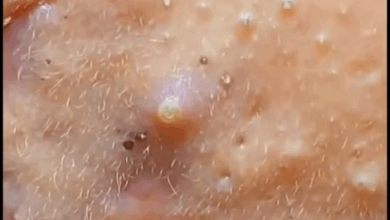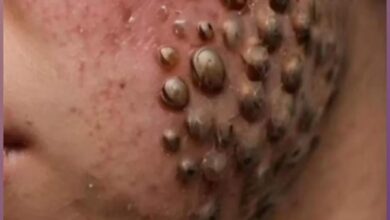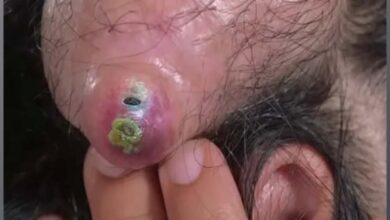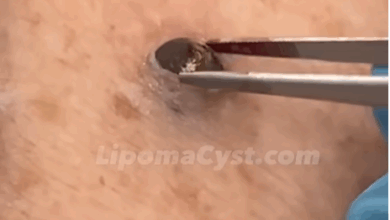Botfly Maggot Removal: A Step-by-Step Guide
Botfly infestations can be an alarming and unpleasant experience for both humans and animals. The botfly, a parasitic insect, lays its eggs on the skin of mammals, which hatch into larvae (maggots) that burrow beneath the skin and cause significant discomfort. If you find yourself dealing with this infestation, knowing how to properly remove botfly maggots is crucial to prevent infection and alleviate pain. This article provides a step-by-step guide for botfly maggot removal.
Understanding Botflies and Their Life Cycle
Botflies are found in tropical and subtropical regions, particularly in Central and South America, but some species can also be found in North America. There are several types of botflies, with the most common ones being the Dermatobia hominis, which primarily targets mammals like humans, dogs, and livestock.
The botfly life cycle begins when an adult female botfly lays eggs on a host’s skin. These eggs hatch and the larvae burrow into the host’s tissue, causing inflammation and discomfort. As the larvae grow, they form visible bumps, often referred to as “warbles,” which can be alarming to the host.
While the maggots usually fall out of the skin after a few weeks or months, they can cause infections if not removed properly. In some cases, medical intervention is required to ensure safe and effective removal.
How to Recognize a Botfly Infestation
Botfly larvae can be detected through a variety of signs and symptoms, which include:
- Visible Swelling or Bumps: The area where the larvae are burrowed usually swells and forms a hard lump under the skin. These lumps are often visible to the naked eye and may have a small hole in the center where the larva breathes.
- Pain and Itching: The host may experience intense itching, irritation, or pain in the affected area due to the larvae’s movement under the skin.
- Drainage: In some cases, a sticky, yellowish fluid may drain from the hole, indicating that the maggot is near the surface.
- Respiratory Sounds: In rare instances, the larvae can cause audible breathing sounds as they move under the skin.
If you notice any of these signs, it’s essential to begin botfly maggot removal as soon as possible.
Steps for Safe Botfly Maggot Removal
Removing botfly maggots should be done with care to avoid complications like infection or damage to surrounding tissue. Here’s a step-by-step guide for safely removing the maggots:
1. Prepare the Area
Before starting, ensure you have all necessary materials. You’ll need:
- Clean gloves
- Tweezers or a fine needle
- Antiseptic or rubbing alcohol
- Bandage or gauze
- A small container for the removed maggots
2. Make the Maggots Surface
One of the key techniques for encouraging the maggot to the surface involves suffocating it. You can apply a thick layer of petroleum jelly or duct tape over the affected area. This method works because it blocks the maggot’s access to oxygen, prompting it to move closer to the surface to breathe.
- Apply a thick coating of petroleum jelly directly over the bump or use duct tape to cover the area completely.
- Leave it on for 24–48 hours. The maggot will typically surface during this time. You may notice it moving toward the hole in the skin where it can breathe.
3. Extract the Maggot
Once the maggot is visible or near the surface, use tweezers or a fine needle to gently grasp and pull it out.
- Gently press around the area to encourage the maggot to come out if it hasn’t surfaced completely.
- Use steady, careful pressure when pulling the maggot. Avoid squeezing it, as this could cause it to rupture under the skin, leading to further infection.
- Once removed, ensure the maggot is intact. If part of it remains in the skin, this can cause further issues, and you may need to consult a healthcare professional for further removal.
4. Clean the Area
After removal, thoroughly clean the wound with antiseptic or rubbing alcohol to prevent infection. Keep the area clean and watch for signs of infection, such as increased redness, swelling, or pus.
5. Dress the Wound
Cover the wound with a sterile bandage or gauze to protect it from dirt and bacteria. Change the dressing regularly and keep the area dry until it fully heals.
When to Seek Medical Help
While home removal methods can be effective, there are cases where professional help should be sought:
- Multiple Maggots: If multiple maggots are present or the infestation seems severe, it’s better to consult a doctor.
- Infected Wounds: If the site becomes infected, indicated by redness, swelling, or pus discharge, seek medical attention immediately.
- Difficult Removal: If the maggot is difficult to remove or if you suspect that parts of it have broken off inside the skin, you may need a doctor to assist with the extraction.
- Tissue Damage: In some cases, the larvae can cause damage to deeper tissues. A healthcare professional can assess the damage and provide the necessary treatment.
Preventing Future Botfly Infestations
Preventing botfly infestations is often easier than dealing with the aftermath. Here are some strategies to reduce the risk:
- Use Insect Repellent: If you’re traveling in areas where botflies are common, use insect repellent containing DEET, picaridin, or permethrin to keep insects at bay.
- Cover Exposed Skin: Wear long sleeves, pants, and a hat to minimize the chance of botfly eggs landing on your skin.
- Inspect Pets Regularly: If you have pets, particularly dogs, in botfly-prone areas, inspect their skin regularly for signs of infestation.
- Stay Informed: Know the signs of a botfly infestation and check for them frequently, especially if you live in or travel to regions where these parasites are common.
Conclusion
While botfly infestations can be a concerning issue, following proper steps for maggot removal can help prevent complications and ensure a full recovery. Remember to approach the removal process with care, keep the wound clean, and seek medical help if necessary. By taking preventive measures, you can reduce the likelihood of future infestations and keep yourself and your pets safe from these parasitic creatures.




